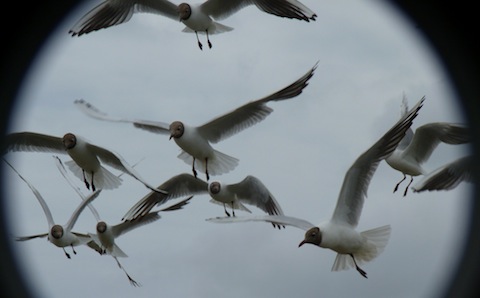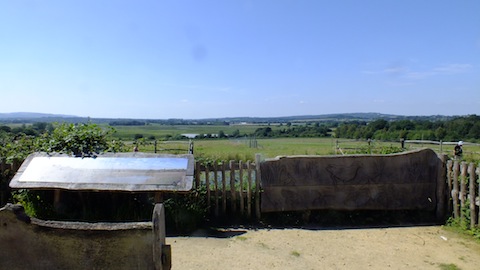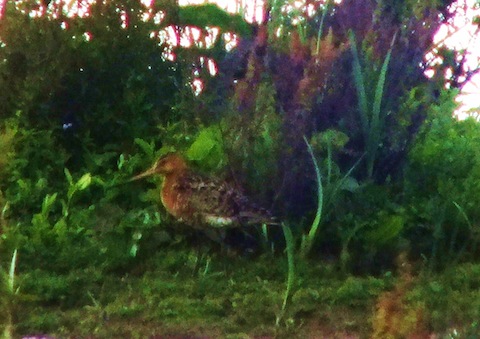 Abraham Lincoln
If given the truth, the people can be depended upon to meet any national crisis...
Abraham Lincoln
If given the truth, the people can be depended upon to meet any national crisis...
 Guildford news...
for Guildford people, brought to you by Guildford reporters - Guildford's own news service
Guildford news...
for Guildford people, brought to you by Guildford reporters - Guildford's own news service
Birdwatcher’s Diary No.13
Published on: 27 Jul, 2012
Updated on: 29 Jul, 2012
[thethe-image-slider name=”Birdwatcher’s diary 13″]
By Malcolm Fincham
My focus of attention this past week as been very much on the common terns at Stoke Lake, mentioned at the end of my previous report.
This was especially true when, on the way to the lake on Wednesday, July 18, I noticed, as predicted, some black-headed gulls had started to arrive back from their breeding grounds. They were starting to occupy the flooded field area across the river to the south-west of the lake itself. There have been fears among those of us who birdwatch at the lake that the gulls would, like last year, attack the young terns.
There just a few gulls at first, but by midweek more than 100 were counted. They varied in numbers throughout the week depending on the time of day, many visiting Stoke Park where the ground had been nicely “ploughed” up for them by the visitors to GuilFest the previous weekend.
On arriving at the lake my fears were quelled as I was still able to count all three juvs [juveniles] terns. I was even more pleased when one of them, probably the first one to hatch on about June 22, took flight (guided by one of the adults) and flew around the lake and returned back safely to the raft.
This I witnessed on Friday, July 20, which by all accounts is the norm for these wonderfully agile bird to progress from hatching to fledgling.
By Sunday evening, July 22, all three chicks had fledged from the raft and were flying around the lake and diving into the water, practising their fishing skills, while being guided by both their parents.
Now they are all “on the wing”, I’m quite confident that they are quite capable of outwitting any attempts of predation from those black-headed gulls.
A curious thing to me about black-headed gulls is how they got their name, as they actually have brown heads. Whereas, Mediterranean gulls [Med gulls], occasionally seen among black-headed gulls, actually have black heads. You can see this in the pictures I have taken. Both species lose their dark coloured heads shortly after the breeding season.
I did manage to fit in a couple of trips to Pulborough Brooks in West Sussex recently, but there was not much to inspire on either trip – apart from an enjoyable walk and scenic views. However, I did pick out and took a distant photo of a black-tailed godwit, still in its summer plumage and probably returning from its breeding grounds in Iceland.

"Found any?" - "Nope, it all looks green to me!" (See Opinion: The Future is Congested, the Future is Grey)
www.abbotshospital.org/news/">





Recent Articles
- Latest Evidence in Sara Sharif Trial
- Ash’s New Road Bridge Is Named – and November 23rd Is Opening Day
- Class A in Underwear Leads to Jail Sentence
- Historical Almshouse Charity Celebrates Guildford in Bloom Victory
- Notice: Shalford Renewable Showcase – November 16
- Firework Fiesta: Guildford Lions Club Announces Extra Attractions
- Come and Meet the Flower Fairies at Watts Gallery
- Updated: Royal Mail Public Counter in Woodbridge Meadows to Close, Says Staff Member
- Letter: New Developments Should Benefit Local People
- Open Letter to Jeremy Hunt, MP: Ash’s Healthcare Concerns


Search in Site
Media Gallery
Dragon Interview: Local Artist Leaves Her Mark At One of England’s Most Historic Buildings
January 21, 2023 / No Comment / Read MoreDragon Interview: Lib Dem Planning Chair: ‘Current Policy Doesn’t Work for Local People’
January 19, 2023 / No Comment / Read MoreA3 Tunnel in Guildford ‘Necessary’ for New Homes, Says Guildford’s MP
January 10, 2023 / No Comment / Read More‘Madness’ for London Road Scheme to Go Ahead Against ‘Huge Opposition’, Says SCC Leader
January 6, 2023 / No Comment / Read MoreCouncillor’s Son Starts Campaign for More Consultation on North Street Plan
December 30, 2022 / No Comment / Read MoreCounty Council Climbs Down Over London Road Works – Further ‘Engagement’ Period Announced
December 14, 2022 / No Comment / Read MoreDragon Interview: GBC Reaction to the Government’s Expected Decision to Relax Housing Targets
December 7, 2022 / No Comment / Read MoreHow Can Our Town Centre Businesses Recover? Watch the Shop Front Debate
May 18, 2020 / No Comment / Read More












Recent Comments